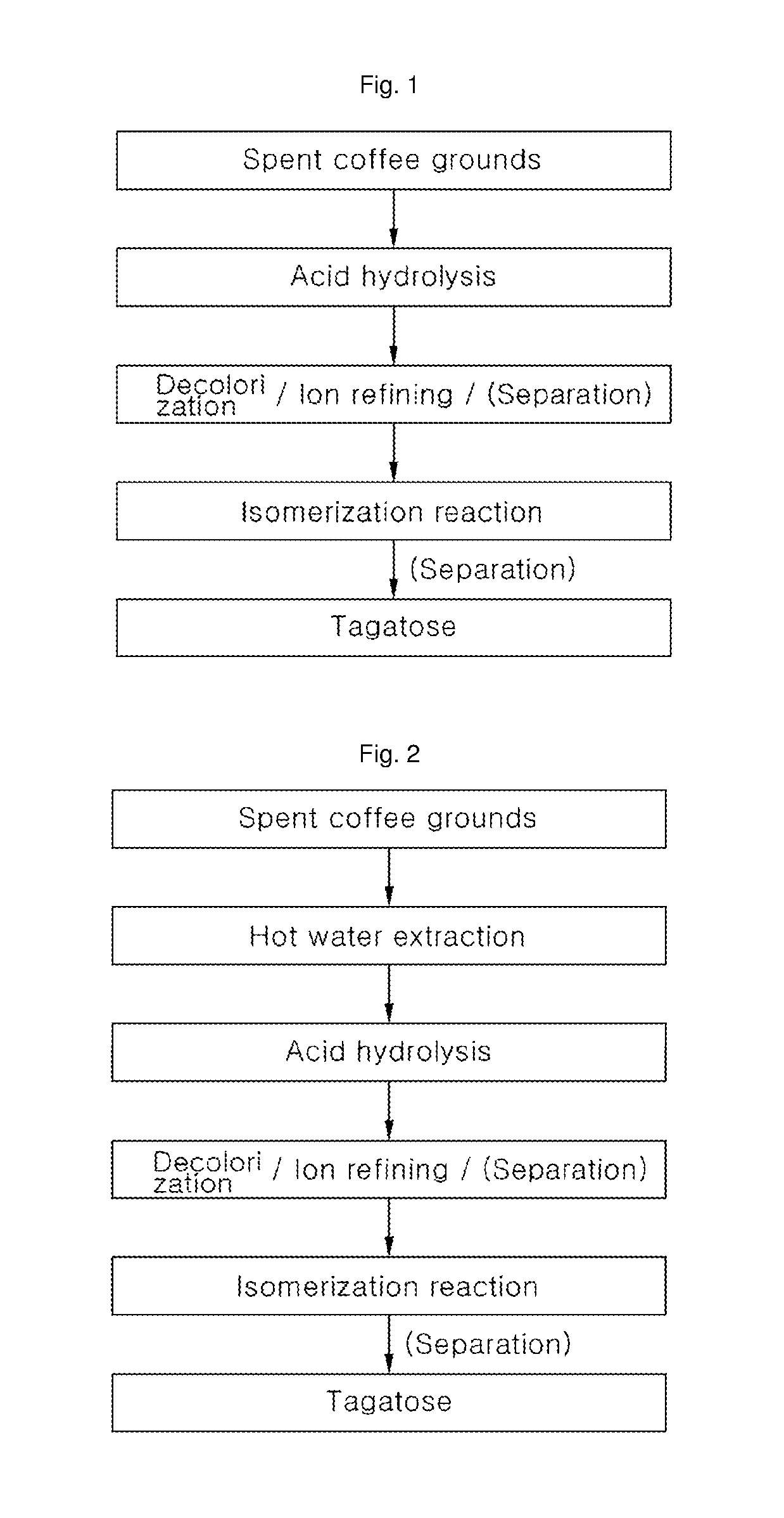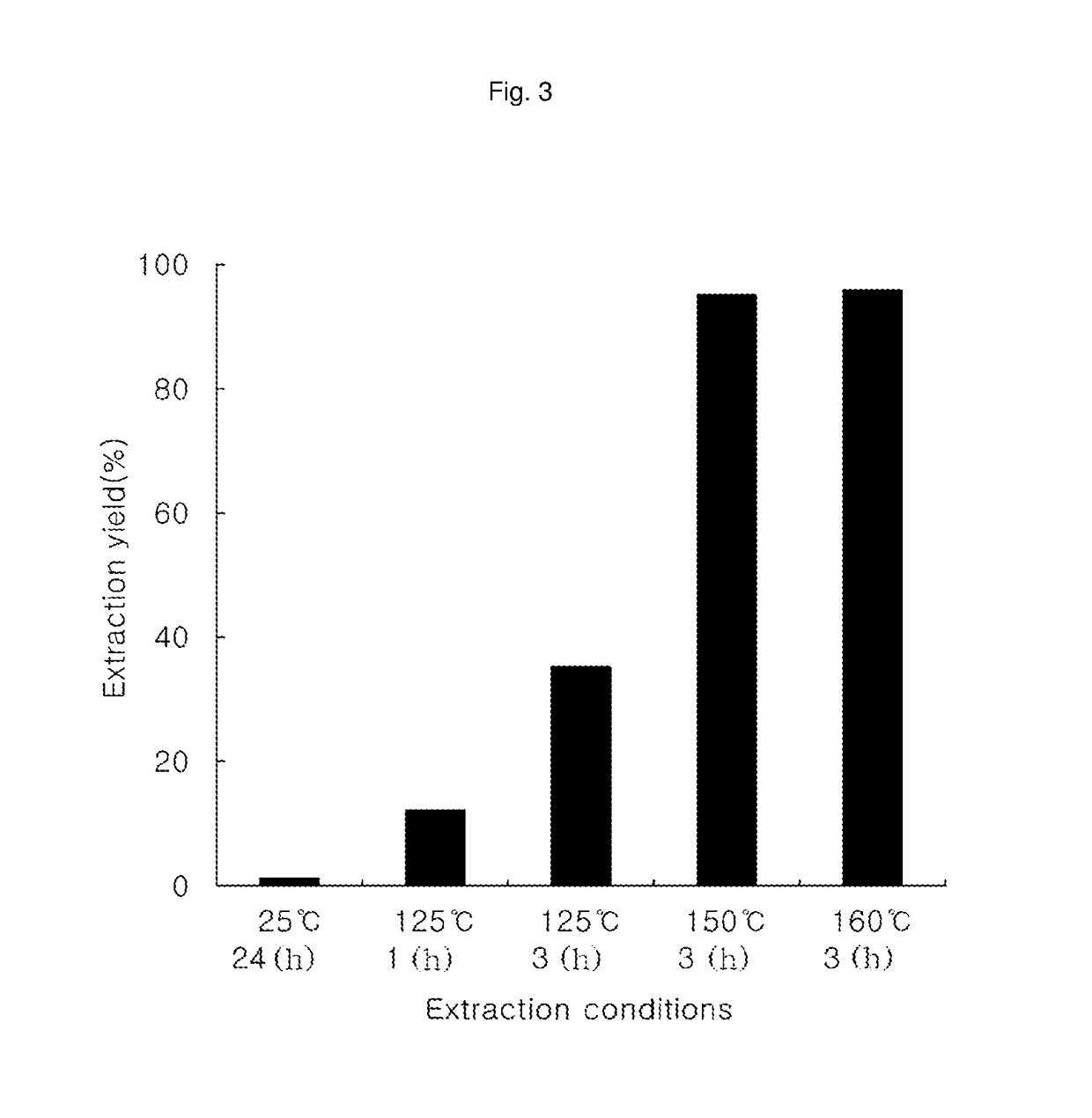Method for preparing tagatose from residue after extracting coffee
a technology of coffee and residue, which is applied in the field of preparing tagatose from coffee residue, can solve the problems of uneconomical preparation of tagatose by directly taking various galactose-containing hydrocarbon sources from nature, and achieve the effects of reducing production costs, preventing resource waste, and low cos
- Summary
- Abstract
- Description
- Claims
- Application Information
AI Technical Summary
Benefits of technology
Problems solved by technology
Method used
Image
Examples
example 1
Analysis of Saccharide Component in Spent Coffee Grounds
[0059]In order to evaluate galactose content in spent coffee grounds of commercially available coffee beans, samples of spent coffee grounds were collected from several companies, followed by evaluating saccharide content by high performance liquid chromatography (HPLC). HPLC was performed by injecting test samples into a column (SUPELCOGEL™ Pb column) set to 80° C. and flowing through the column using distilled water as a mobile solvent at a rate of 0.3 ml / min. The results of saccharide analysis are shown in Table 3. It could be seen that coffee beans and spent coffee grounds contain saccharides in the form of galactomannan and arabinogalactan.
[0060]
TABLE 3Saccharide ratio (%) for spent coffee grounds available from companiesGlu-coseXyloseGalactoseArabinoseMannoseSpent coffee23.140.9224.686.1145.15grounds_availablefrom company ASpent coffee26.58—24.514.1244.79grounds_availablefrom company BSpent coffee27.18—26.585.4040.85groun...
example 2
Hot Water Extraction of Oligosaccharides from Spent Coffee Grounds
[0061]Spent coffee grounds available from company B, which were shown to have relatively low content of arabinose in Example 1, were subjected to extraction in order to increase extraction yield of coffee oligosaccharides. Extraction was carried out by changing extraction conditions such as liquid-to-solid ratio, extraction temperature, extraction time, and the like.
example 2-1
Selection of Amount of Added Water in Spent Coffee Grounds (Liquid-to-solid Ratio)
[0062]Extraction was performed by adding water in amounts of 20 g, 40 g, and 40 g to 10 g of spent coffee grounds. In the case of adding 20 g of water, since spent coffee grounds absorbed water and thus reduced the recovery amount of liquid, oligosaccharide recovery yield was low. In the case of adding 60 g of water, saccharide concentration was too diluted. Thus, 40 g of water was added to 10 g of spent coffee grounds.
PUM
| Property | Measurement | Unit |
|---|---|---|
| temperature | aaaaa | aaaaa |
| temperature | aaaaa | aaaaa |
| temperature | aaaaa | aaaaa |
Abstract
Description
Claims
Application Information
 Login to View More
Login to View More - R&D
- Intellectual Property
- Life Sciences
- Materials
- Tech Scout
- Unparalleled Data Quality
- Higher Quality Content
- 60% Fewer Hallucinations
Browse by: Latest US Patents, China's latest patents, Technical Efficacy Thesaurus, Application Domain, Technology Topic, Popular Technical Reports.
© 2025 PatSnap. All rights reserved.Legal|Privacy policy|Modern Slavery Act Transparency Statement|Sitemap|About US| Contact US: help@patsnap.com


